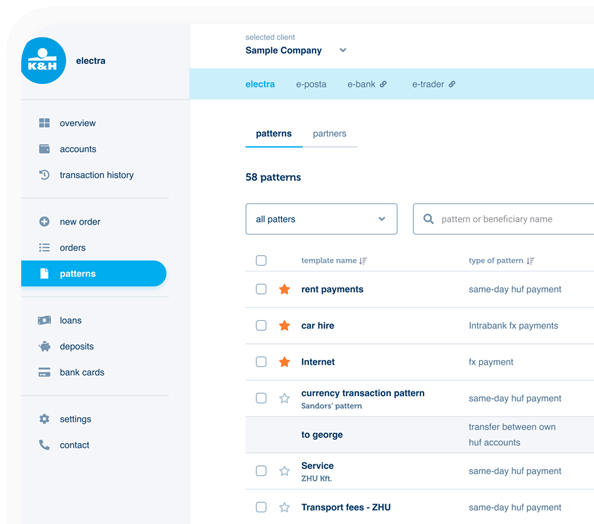Top Digital Transformation Strategies for 2025 to Boost Efficiency and Enhance Customer Experience
In 2025, digital transformation is no longer an option, but a condition for survival and growth. Most organizations have already started down this path, but there are still many myths, misunderstandings, and failed initiatives. The real question today is not whether to digitalize, but how to do it smartly, with focus, and in a user-centric way.
In our article examining the relationship between digital transformation and user experience (UX), we concluded that most projects fail not because of technology, but because of the human factor and the neglect of user needs. Organizations are investing huge sums in digital transformation, but the success rate remains alarmingly low if the user is not at the center of the strategy.
 Digital investment is the key to survival
Digital investment is the key to survivalAccording to McKinsey, more than 90% of organizations have already embarked on digital transformation, and 81% of leaders say digital investment is the key to survival. The spending is correspondingly enormous: IDC’s forecast shows it could reach $3.9 trillion by 2027. The pandemic only added fuel to the fire, with 97% of companies accelerating their digital projects. Yet, in the great rush, the essential point can often be lost. According to stark data from McKinsey, 70% of such initiatives simply fail, most often because in the end, the users ‒ be they customers or employees ‒ simply don't want the final result.
We no longer ask why user-centricity is important, but how the defining technological trends of 2025 can be brought to success with this mindset. What are the strategies that can turn customer experience and operational efficiency into a real competitive advantage?
1. Harnessing Advanced AI for Digital Transformation
Artificial intelligence (AI) has outgrown its infancy where it was used only for data analysis and simple automation. Today, it is a cornerstone of strategic transformation.
Agentic AI – which Gartner identifies as one of the most important trends in technology – represents a strategic leap. This is no longer just an assistant; it is an AI that understands goals and then independently plans and executes the necessary steps to achieve them. The strategic implication is clear: as Gartner writes, a kind of "digital workforce" is emerging, capable of solving complex, multi-step customer service problems or dynamically modifying the supply chain based on real-time data. The Salesforce Agentforce platform is a good example of this.
The other direction is multimodal AI, which understands not only text but also voice and video. Google Gemini Live and OpenAI's Sora have already shown what these technologies are capable of. This allows for much richer insights from a wide variety of data sources. Companies can thus analyze customer interactions more comprehensively (paying attention to tone of voice, facial expressions), create more effective marketing content, and extract valuable information from unstructured data.
Of course, this also requires appropriate hardware. For companies to harness the full potential of agentic and multimodal AI, they must invest in a technology infrastructure that can handle intensive processing demands. Specialized chips and infrastructure are essential for companies to effectively scale their AI models.
2. Cloud-Native and Hybrid Architectures for Agility and Scalability
Cloud computing remains a fundamental pillar of digital transformation, even if it's not as sexy a topic as AI. The cloud-first principle has become standard, with 85% of organizations expected to adopt this approach by the end of 2025 globally, according to Gartner. However, the strategy now goes beyond mere migration, i.e., moving existing systems. The emphasis is on cloud-native applications, which are developed from the ground up in the cloud, taking full advantage of its scalability and flexibility. It's like the difference between a house designed for a mountainside and a flat-land cube house that you try to haul up the mountain. The latter might work, but it will never be a perfect fit.
Since the same solution rarely works for everyone, companies are increasingly adopting hybrid and multi-cloud strategies. This means they mix on-premises and cloud-based systems or use multiple cloud providers at the same time. This way, they can keep sensitive data on their own servers while taking advantage of the cloud's flexibility elsewhere. The convergence of the cloud, AI, and the Internet of Things (IoT) creates an integrated ecosystem where the cloud provides the infrastructure and AI analyzes the data.
 The convergence of the cloud, AI, and the Internet of Things (IoT) creates an integrated ecosystem
The convergence of the cloud, AI, and the Internet of Things (IoT) creates an integrated ecosystem3. Prioritizing UX and Simplicity
The problem is that most companies introduce technology without a real strategy or UX considerations. Yet, a poor UX can drive 89% of customers to competitors, while a well-designed interface can increase conversions by up to 400%.
This isn't an aesthetic question. UX is the key to conversion, satisfaction, retention, and referrals. According to Harvard Business Review, "simplicity" ranks highest in what customers value. Therefore, digital transformation only works if it is user-centric on all fronts – not just nicely designed.
User-centricity must be built into every single digital touchpoint. This means deeply understanding user needs, mapping customer journeys to eliminate friction, and designing intuitive, easy-to-navigate interfaces. The structural design of a digital product, its information architecture, is crucial in ensuring users don't feel lost.
Hyper-personalization should also be mentioned here, where AI is used to create individualized offers based on user behavior; 73% of customers have come to expect this. The NIKE SNKRS app or Starbucks' Digital Flywheel initiative are good examples. An omnichannel approach is a basic expectation today: the customer must be able to switch seamlessly between web, mobile, and physical channels.
4. Prioritizing Cybersecurity and Trust Technologies
As we rely more and more on digital systems and AI, building trust becomes a critical strategic pillar. On one hand, a comprehensive AI governance framework is needed to manage legal, ethical, and operational risks and to ensure that AI operates reliably. The strategic goal is to build trustworthy AI systems that guarantee regulatory compliance, reduce the chance of bias, and protect data.
On the other hand, we must prepare for future threats. Although it's still in its early stages, quantum computing poses a long-term threat to current encryption standards. Post-quantum cryptography (PQC) can offer protection against the quantum bogeyman, making it an important strategic direction. Furthermore, cyber threats are constantly evolving and becoming more complex, making increased cybersecurity investment essential. The global financial sector sets an example here, where 89% of firms plan to increase their cybersecurity spending. Therefore, a proactive cybersecurity strategy – with continuous monitoring, threat detection, and employee training – is indispensable.
In the fight against digital disinformation, protecting a brand's reputation in the age of real-time online information flow deserves special attention. The strategic task is therefore the active management of the brand image and customer trust, which includes identifying and effectively managing harmful narratives.
A Map Through the Chaos: Roadmaps and the Power of Change
How can all this be coordinated? The lack of a clear vision is one of the main pitfalls. Creating a robust digital transformation roadmap is essential. The first step is an honest assessment of the current digital situation, followed by the definition of specific, measurable business goals.
 Creating a robust digital transformation roadmap is essential
Creating a robust digital transformation roadmap is essentialFortunately, one doesn't have to reinvent the wheel. Several proven frameworks exist that can provide a guide for planning. While they each emphasize different aspects, they help structure thinking and ensure that critical steps are not missed.
- Gartner's Six-Step Framework, for example, is an excellent starting point that provides chief information officers (CIOs) and business leaders with tools to build a thriving digital enterprise. This model ‒ built on commitment, leadership, strategy, technology, and creativity ‒ helps in the development and guidance of digital workplace programs.
- McKinsey's 4D model (originally discovery, design, delivery, de-risk) is another popular approach that now emphasizes data, decisioning, design, and distribution. In addition, the company developed the six building blocks model, which highlights the importance of strategy and innovation, understanding the customer decision journey, process automation, organizational alignment, appropriate technology, and leveraging data.
- The Boston Consulting Group (BCG) framework offers a pragmatic, three-phase approach. The first phase focuses on short-term quick wins that bring immediate returns and can finance longer-term plans. The second and third phases concentrate on medium-term and long-term sustainability and complete transformation. This model can be ideal for organizations where initial momentum and demonstrating quick, visible results are important for securing internal support.
Of course, the best plan is worthless if people don't get behind it. Change management and creating a digital culture are critical. Employees must be involved in the process and provided with adequate training and support, and a culture that supports experimentation and open communication must be built.
In 2025, digital transformation is no longer just about technological adaptation. Success depends on harnessing advanced AI, building on agile cloud architectures, designing user-centric experiences, and underpinning all of this with robust cybersecurity. The winning approach integrates these strategies, aligning technological capabilities with clear business goals.









